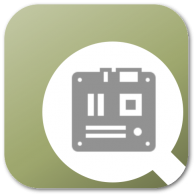
impulse EMBEDDED
Embedded system complexity is constantly growing and high-level languages like java take more and more space in this area. impulse can help developers to improve the visibility of what is going on inside.
This extension contains a serial line (RS232) adapter, CDT memory adapter, Serial Wire Viewer (SWV) reader and the SystemView reader.
Attach and Read Trace Data from Embedded Target Board
Read, Analyse and Visualize Memory Portions While Debugging
Analyse Real-Time Behaviour of Your RT-OS
Serial Line Adapter
CDT Memory Adapter
SWV Reader
SystemView Reader
Details
-
Serial Line Adapter
Read data from a serial line (RS232,..)The Serial Line Adapter allows to read streams from serial line. The received data is forwarded to a configurable reader. Scripts are used to send data to the serial line counterpart and activate the streaming environment (stimulation). The adapter can be combined with other adapters using a multi-adapter port.
Platforms:  32/64bit
32/64bit 32/64bit
32/64bit 32/64bit
32/64bitRequirements: - None
Known limitations: - None
Status: - Stable
Operations: - Connect
- Read
- Sync
- Stimulate
Parameters: - Enable: Enables/disables the port adapter.
- Port: Select the system port as the input.
- Baud-rate, Data-Bits, Stop-Bits, Parity: Serial line parameters.
- Reader: Select the reader to parse the raw data stream.
- Configuration: Optionally, a serialization configuration can be selected (depending on the reader).
- Insert as root: If the adapter is included in a multi adapter port, the flag will force the adapter to add its signal hierarchy into the root of the combined record.
- Write input to file: Select a file to log the input stream.
- Synchronisation: Allows to define a script to do adapter synchronisation.
- Stimulation: Allows to define a script to stimulate the connected serial port.
-
CDT Memory Adapter
Read data from memory regions (CDT debugging)The CDT Memory Adapter reads memory data blocks from the CDT debugger. The start address/size can be defined explicitly or in form of debug expressions (e.g. trace->buffer). The received data is forwarded to a configurable reader. The adapter can be combined with other adapters using a multi-adapter port.
Platforms:  32/64bit
32/64bit 32/64bit
32/64bit 32/64bit
32/64bitRequirements: - Eclipse CDT tooling (Will be automatically installed).
Known limitations: - None
Status: - Stable
Operations: - Connect
- Read
- Sync
Parameters: - Enable: Enables/disables the port adapter.
- Address: Define the memory address, either as a fixed value or as a debugger expression.
- Size: Define the memory size, either as a fixed value or as a debugger expression.
- Reader: Select the reader to parse the raw data stream.
- Configuration: Optionally, a serialization configuration can be selected (depending on the reader).
- Suspend: Wait (Wait for debugger to suspend), Force Suspend.
- Write input to file: Select a file to log the input stream.
- Insert as root: If the adapter is included in a multi adapter port, the flag will force the adapter to add its signal hierarchy into the root of the combined record.
- Synchronisation: Allows to define a script to do adapter synchronisation.
-
SWV Reader
Handle Serial Viewer Viewer dataThe Serial Wire Viewer from ARM (Cortex-M microcontroller) provides non-intrusive real-time tracing (ITM). This mechanism is usually used for printfs only. The impulse SWV reader enhances SWV use cases as it allows users to log and trace different kinds of data (real, integer, strings or logic), which can then be stored, visualized and analysed with impulse.
Platforms:  32/64bit
32/64bit 32/64bit
32/64bit 32/64bit
32/64bitRequirements: - None
Known limitations: - File size limited by virtual memory and temporary storage
Status: - Stable
Operations: - Load
- Stream
Parameters: - None
Configuration: - A SWV reader configuration is required. The configuration comprise timing settings and the content of the SWV file (the data type for each ITM channel).
-
SystemView Reader
SEGGER's SystemView environment is a real-time recording and visualization tool that visualizes the runtime behaviour of embedded applications. With the SystemView reader, you can use impulse to read and analyse SystemView recording data from files or directly from running targets.
Platforms:  32/64bit
32/64bit 32/64bit
32/64bit 32/64bit
32/64bitRequirements: - None
Known limitations: - File size limited by virtual memory and temporary storage.
Status: - Stable
Operations: - Load
- Stream
Parameters: - None
Configuration: - A SystemView reader configuration is required. The configuration defines the domain base and contains the event definition .
